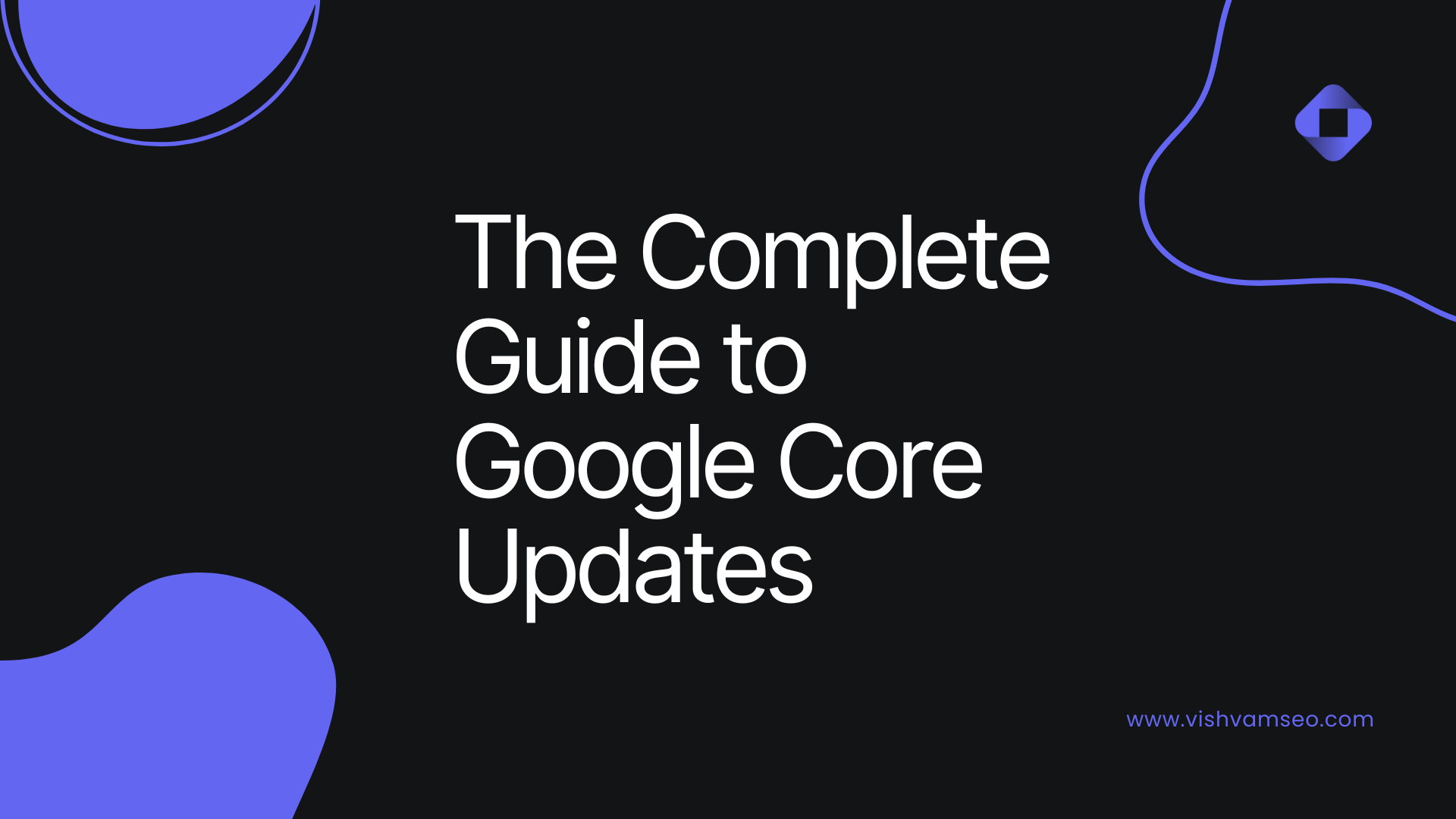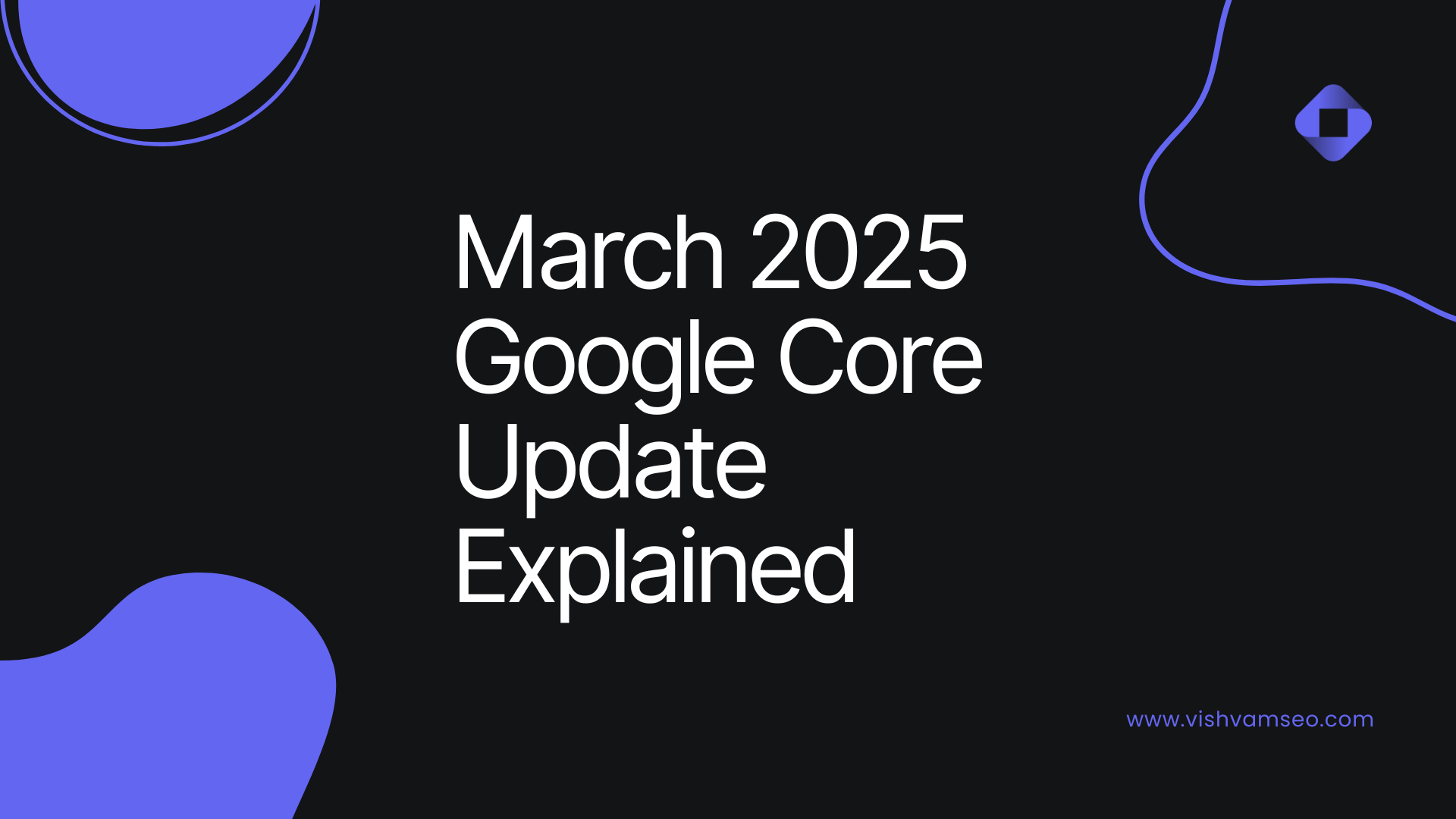If you’ve been in SEO long enough, you’ve seen it happen:
Traffic is stable on Monday rankings crash by Wednesday.
No warnings. No explanations. Just a Google Core Update rolling out silently in the background.
This guide breaks down every single core update from 2020 to 2025 about what it was about, why Google released it, how it affected rankings, and exactly what you can do if your site got hit.
Let’s break it all down in your language, real, no-fluff, everything you need to know.
Google Core Updates (2020–2025) at a Glance
- March 2025 Core Update (Mar 13–27, 2025)
- June 2025 Core Update (Jun 30–Jul 17, 2025)
- December 2024 Core Update (Dec 12–18, 2024)
- November 2024 Core Update (Nov 11–Dec 5, 2024)
- August 2024 Core Update (Aug 15–Sep 3, 2024)
- March 2024 Core Update (Mar 5–Apr 19, 2024)
- November 2023 Core Update (Nov 2–28, 2023)
- October 2023 Core Update (Oct 5–19, 2023)
- August 2023 Core Update (Aug 22–Sep 7, 2023)
- March 2023 Core Update (Mar 15–28, 2023)
- May 2022 Core Update (May 25–Jun 9, 2022)
- September 2022 Core Update (Sep 12–26, 2022)
- November 2021 Core Update (Nov 17–30, 2021)
- July 2021 Core Update (Jul 1–11, 2021)
- June 2021 Core Update (Jun 2–12, 2021)
- December 2020 Core Update (Dec 3–16, 2020)
Deep Dive: Each Core Update Explained
March 2025 Core Update (Mar 13–27, 2025)
This update rolled out over about two weeks and caused major shifts across industries like retail, government sites, and forums. It went after thin content and sites relying too heavily on AI-generated text. If your rankings took a hit, it was likely due to lack of depth or originality. Recovery means creating content with real experience, examples, and expert input rather than just rewriting what’s already out there.
June 2025 Core Update (Jun 30–Jul 17, 2025)
This update aimed to reward content that genuinely helps users and comes from credible, transparent sources. Hobby blogs and niche sites with authentic voices gained visibility while many big e-commerce platforms and YMYL (Your Money, Your Life) sites lost traffic. If you were hit, focus on depth, author transparency, and user-focused value over mass production.
December 2024 Core Update (Dec 12–18, 2024)
This one was fast and intense. It lasted just six days but created heavy volatility across search results. Sites without strong trust signals or original research were impacted the most. If you dropped here, improving credibility through author bios, citing sources, and adding fresh content can help.
November 2024 Core Update (Nov 11–Dec 5, 2024)
This update continued the focus on expertise and relevance. It rewarded thought leadership content while thin affiliate-style content and low-value pages lost rankings. Businesses with strong industry knowledge and data-backed content came out ahead.
August 2024 Core Update (Aug 15–Sep 3, 2024)
This update targeted spammy practices and low-quality AI-generated pages. At the same time, it lifted high-quality, people-first content across industries. If you lost rankings here, removing low-value pages and improving user experience should be your priority.
March 2024 Core Update (Mar 5–Apr 19, 2024)
This was the longest core update ever, lasting 45 days. It cracked down on sites using shady SEO tactics like scaled content abuse or exploiting expired domains. Recovery here means cleaning up backlinks, stopping spammy tactics, and focusing on genuine, useful content.
November 2023 Core Update (Nov 2–28, 2023)
This one hit affiliate and low-quality review sites especially hard. Google’s goal was to push content that reflects expertise and personal experience rather than generic rewrites or automated reviews.
October 2023 Core Update (Oct 5–19, 2023)
This came alongside spam updates and hit many finance and health sites where trust is critical. Sites lacking transparency, accurate data, or real authorship credentials saw drops.
August 2023 Core Update (Aug 22–Sep 7, 2023)
This pushed Google’s “helpful content” approach further. Sites with real-world experience, community input, or personal insights gained visibility, while shallow pages lost out.
March 2023 Core Update (Mar 15–28, 2023)
This one was fast and impacted industries like shopping and entertainment the most. Thin product descriptions or rehashed content took a beating while comprehensive guides performed better.
May 2022 Core Update (May 25–Jun 9, 2022) and September 2022 Core Update (Sep 12–26, 2022)
May focused on rewarding original, high-quality media and reference content. September expanded the “helpful content” system worldwide, making it clear that purely SEO-driven pages without user value wouldn’t survive long-term.
2021–2020 Core Updates (Brief Overview)
The 2021 updates reinforced quality and user experience, especially for mobile users, while December 2020 was the first big shake-up after pandemic traffic surges. Across these years, the trend was consistent: sites with low E-E-A-T (Experience, Expertise, Authoritativeness, Trustworthiness) signals kept losing ground.
Recovery and SEO Strategy That Works
- Show real expertise with credible author bios and professional insights
- Focus on solving user problems instead of just hitting keywords
- Refresh and expand older content with new data and examples
- Use better structure and visuals to improve engagement and clarity
- Monitor traffic drops page by page to find exact causes
Why Does Google Release Core Updates?
Google’s main job is to make sure search results stay useful. When someone types in a query, Google wants the best, most trustworthy, and most relevant content at the very top.
But here’s the thing — the internet doesn’t stay the same. New websites launch every day. AI tools pump out thousands of articles. Spammers find loopholes to game rankings. What looked like quality content six months ago might be outdated, misleading, or flat-out wrong today.
That’s where Core Updates come in. Every few months, Google essentially hits the refresh button on its ranking systems. During this process, it:
- Re-evaluates billions of pages across the web
- Improves the signals it uses to judge quality, authority, and trust
- Pushes down low-quality, manipulative, or thin content
- Rewards sites that provide original, helpful, and people-first information
How Core Updates Affect Your Traffic
When a core update rolls out, Google isn’t handing out penalties. It’s re-evaluating everything in the index with a fresh set of ranking signals. Some sites climb, others fall, and a few stay stuck in the middle. Here’s how it usually plays out:
Winners:
Sites that create original, in-depth, and user-focused content often see a boost. These are pages that answer real questions, show first-hand expertise, and give readers something better than what’s already ranking. Think detailed guides, case studies, research-backed insights, or content with real-world experience baked in.
Losers:
Sites with thin, outdated, or low-quality pages typically drop. This includes pages stuffed with keywords but lacking substance, AI-spammy content pumped out with no editing, or articles that copy what’s already online without adding value.
Gray Area:
Sometimes even good sites lose traffic. It doesn’t always mean the site is bad — sometimes competitors simply did a better job updating, expanding, or restructuring their content. When Google re-evaluates, the bar moves higher, so standing still often means losing ground.
The key thing to remember: a traffic drop after a core update isn’t punishment. It’s a signal that Google’s standards or the competitive landscape shifted and your site needs to adapt to stay ahead.
How to Recover if You Got Hit
First things first: don’t panic. When a core update hits and your traffic drops, it doesn’t always mean you did something wrong. Core updates are Google re-evaluating the entire search landscape. Sometimes your competitors improved faster, sometimes Google just changed how it measures quality.
The smart move? Give it time. Rushing to overhaul everything in the first week often does more harm than good. Wait for the update to fully roll out, analyze what changed, then take action based on data not fear.
Here’s what actually works when it’s time to fix things:
- Audit content quality: Is it genuinely helpful or just SEO filler?
- Check E-E-A-T: Add author bios, credentials, original research, trust signals.
- Improve topical depth: Cover entire topics, not just keywords.
- Update old content: Fresh stats, new images, better UX.
- Diversify content types: Add videos, infographics, FAQs for user value.
- Watch analytics: Identify drops page-by-page, not sitewide panic.
Recovery can take until the next core update sometimes months so focus on making your site the best result for your audience instead of chasing quick wins.
FAQs About
How often does Google release core updates?
Google typically releases core updates several times a year, but the exact timing isn’t fixed. Some years see 2–3 updates, while others may have 4 or more. It all depends on when Google makes significant improvements to its ranking systems.
How long does it take for a core update to fully roll out?
Most core updates take about one to two weeks to finish rolling out. During this period, rankings can fluctuate a lot, so it’s best to wait until the rollout is complete before making big SEO decisions.
How can I tell if a core update affected my site?
Look at your Google Search Console and analytics data. A sharp, unexplained change in rankings or organic traffic around the update dates is usually a clear sign. Compare traffic and impressions before, during, and after the rollout.
Does every core update require me to change my SEO strategy?
Not always. If your site consistently focuses on high-quality, people-first content with good technical SEO, you may not need major changes. However, each update raises the quality bar, so regular content audits are smart.
If my rankings dropped, should I delete all the affected pages?
No. Deleting pages blindly can hurt your site more. First, evaluate the content. If it can be improved, updated, or expanded, do that. Only remove pages that are thin, duplicate, or add no real value.
How long does it take to recover after a core update?
Recovery time depends on when you make improvements and how Google’s systems re-evaluate your site. Sometimes you can see gains before the next update, but big improvements often show after the next core update cycle.
Do backlinks still matter after core updates?
Yes, but quality matters way more than quantity. A few strong, relevant backlinks from trustworthy sites help more than hundreds of low-value links. And backlinks alone won’t save poor-quality content.
Can core updates affect local SEO rankings too?
Yes, core updates can impact local search results as well, especially if your local landing pages have thin content or lack trust signals. Focus on real value for local users, accurate information, and strong reputation signals.
Are core updates related to Google penalties?
No. Core updates are not manual penalties. They are system-wide changes to how rankings work. Your site isn’t being punished; it’s being re-evaluated alongside every other site on the web.
What’s the biggest mistake site owners make after a core update?
The biggest mistake is panicking and making random changes without understanding what went wrong. It’s better to analyze data calmly, prioritize pages with real potential, and focus on long-term quality improvements rather than quick hacks.





